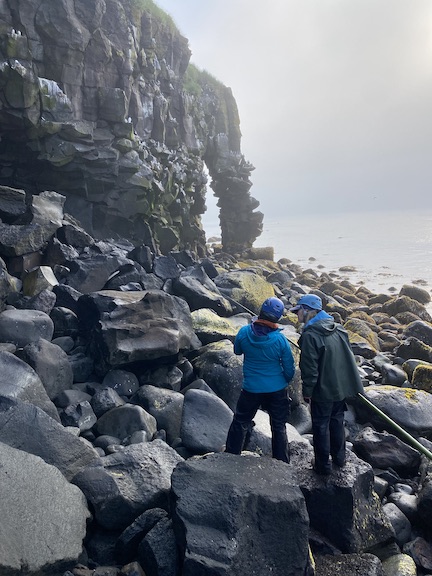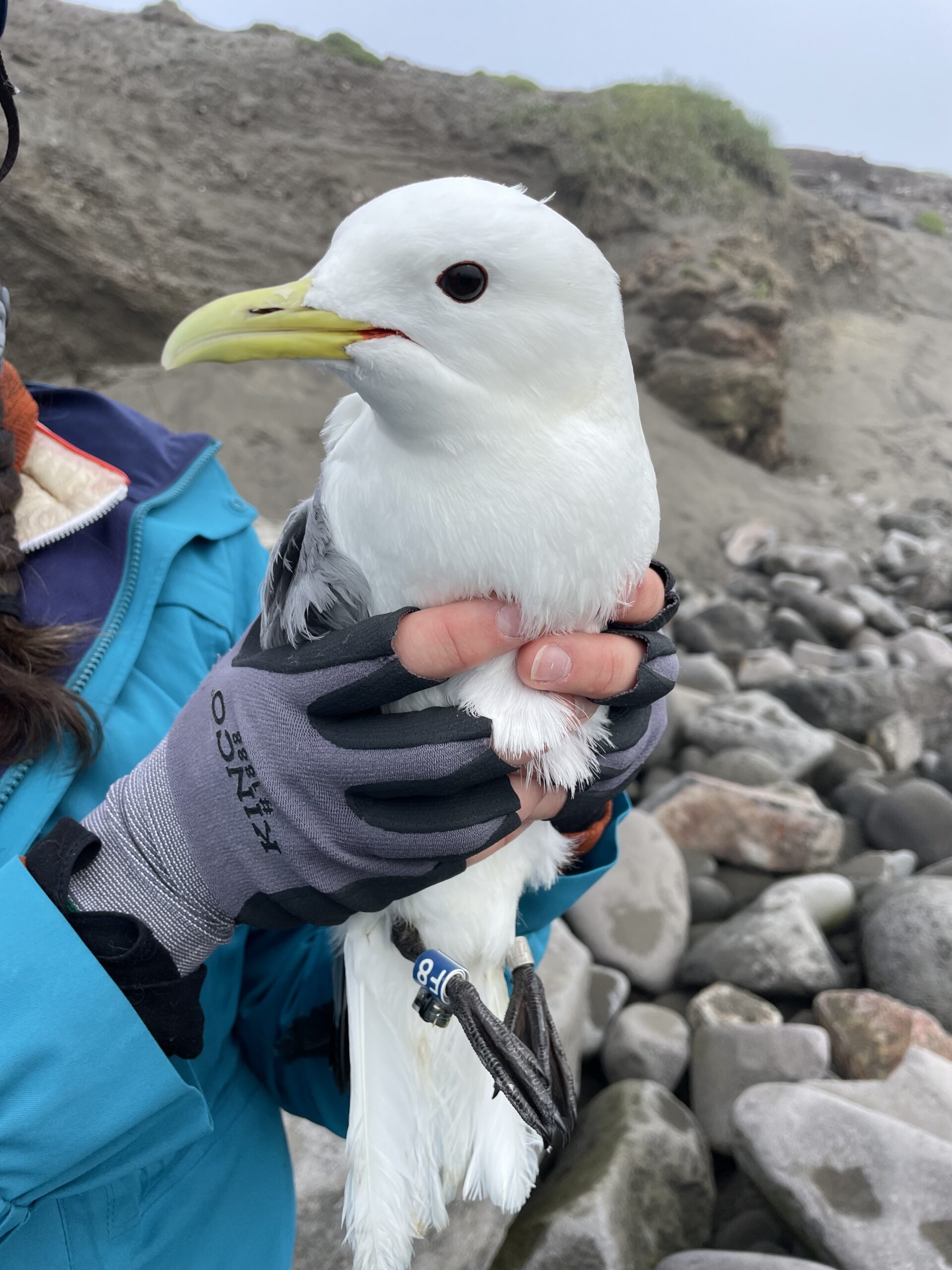Julia Matteucci shares this research update on the seabird tracking study on St. Paul Island.
2024 Field Season
The 2024 field season was an exciting and busy one!
In 2023, 15 geolocator (GLS) tags were deployed on adult Black-legged Kittiwakes (see image above). Last summer, our team managed to catch 10 of these 15 birds, remove the GLS tags, and download a full year’s worth of data from each bird. These data allow us to see what parts of the ocean these birds visited during the fall, winter, and spring. We also observed three other kittiwakes at colonies with our tags, but were unable to capture them. We deployed 18 more tags on kittiwakes and were even able to deploy 13 tags on Thick-billed Murres! We also collected blood and feather samples from all captured birds. These samples will be tested for mercury and stable isotopes, naturally occurring forms of elements that tell us which level in the food web birds are feeding.
 Geolocator tags were deployed on 13 thick-billed murres in the summer of 2024. Photo by Julia Matteucci
Geolocator tags were deployed on 13 thick-billed murres in the summer of 2024. Photo by Julia Matteucci
Though these two species breed on the same island, they have very different body structures that allow them to access different resources in the ocean.
Kittiwakes forage in surface waters for fish and zooplankton (very small animals that float in the water and eat algae), while murres are deep diving birds and can dive over 100 meters (over 300 feet) to hunt fish. Murres have short, stubby wings that allow them to “fly” through the water, but that means they are not very good at flying out of the water and cannot fly long distances.
In comparison, kittiwakes’ have long, slender wings that allow them to glide on air currents over long distances. These differences in foraging behaviour mean that kittiwakes and murres could be accessing distinct areas of the ocean and feeding on prey species with different concentrations of mercury. Studying these two species provides an interesting comparison!
Julia Matteucci, a new Masters student in the Marine Biology department at the University of Alaska Fairbanks, is working on analyzing these data as part of her project. The combined information of at-sea movement, mercury levels, and stable isotopes will help us understand if certain regions of the ocean or prey are exposing birds to higher levels of mercury.
Why are these data important?
These data are important to understand as there have been major climatic changes in the Bering Sea and North Pacific Ocean in the last 10 years, including marine heatwaves, reduced sea ice cover, and warmer than average sea surface temperatures. Seabirds are sensitive to these changes. Through our study, we aim to understand how these changing conditions are influencing seabirds and compare our results with those of previous studies on Pribilof Island seabirds.

Under the seabird cliffs on St. Paul Island. Photo by Trish Pence.
2025 Field Season
This summer, we are excited to see which birds have returned (kittiwakes and murres this time!) and retrieve more GLS tags to learn where the birds went over the 2024-2025 winter. Thick-billed Murres on St. Paul Island had a low breeding success in 2024 (https://seabirdyouth.org/wp-content/uploads/2024/11/2024-Seabird-Report-Card.png) and we had to deploy geolocators on some birds who did not have eggs or chicks. It will be interesting to see if this affects the return and recapture rate of these birds in 2025. We do not plan on deploying anymore tags on kittiwakes, but if we recover enough tags from murres, we will plan on deploying these tags again on different individuals.
Many thanks to our funders for making this research possible
This study is funded by the USFWS Tribal Wildlife Grant program, the UA Faculty Initiative Fund, the Oil Spill Research Institute, and a Rasmuson Fisheries Research Center Graduate Student Fellowship (through the College of Fisheries and Ocean Sciences at UAF).

